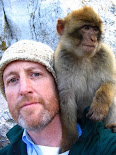 The artwork was commissioned by the National Geographic, but never published in the magazine because the article was severely cut in length at the last minute, a common but somewhat frustrating fate of art (and photos) for the magazine.
The artwork was commissioned by the National Geographic, but never published in the magazine because the article was severely cut in length at the last minute, a common but somewhat frustrating fate of art (and photos) for the magazine.I’m very pleased that the art will be published for the first time, and at a large scale, in my upcoming book Imaginative Realism.
HISTORY PAINTING
History isn’t a collection of facts. It’s a collection of stories. A historical painting is first and foremost a storytelling picture with a set of characters at some moment of crisis or decision. Although you can show only a single snapshot of the events, your painting can suggest the full scope of the narrative. The challenge is choosing the moment and the angle that tells the tale in the most memorable and engaging way.
 Above: researching on the Constellation, a surviving Civil-War-era ship in the Baltimore harbor.
Above: researching on the Constellation, a surviving Civil-War-era ship in the Baltimore harbor. The moment I chose to portray was 3:37 p.m. on March 8, 1862, when the USS Cumberland sank in Hampton Roads, Virginia, the victim of the CSS Virginia, which went on the next day to battle with the Monitor.
The Virginia, or Merrimac, as it was known before it was converted into the slope-slided ironclad, delivered its fatal blow to the Cumberland with its 1,500-pound iron ram.
As his ship sank, Lieutenant George U. Morris gave the command for all hands to save themselves, but he remained on deck to encourage the decimated pivot gun crew, who kept firing even as the waves closed around them. Morris defied a request to surrender, declaring that they would sink with their colors flying. The Virginia sustained only superficial damage as the Cumberland’s cannonballs bounced harmlessly off its 4-inch iron covering.

Part of the research involved reading the extensive surviving firsthand accounts, not all of which agreed on the details. I then traveled to the location and met with historians, including John Quarstein, above, who pointed to the exact spot where the Cumberland finally settled. At naval history museums, I looked at the few remaining fragments of both ships, and I photographed scale models of the vessels.
Tomorrow we'll look at the first sketches to explore the composition.
-----
Sinking of the Cumberland, Part 1A: The Backstory
Sinking of the Cumberland, Part 1B: The Research
Sinking of the Cumberland, Part 2: Choosing the Scene
Sinking of the Cumberland, Part 3: Acting it Out
Sinking of the Cumberland, Part 4: Final Art





















































